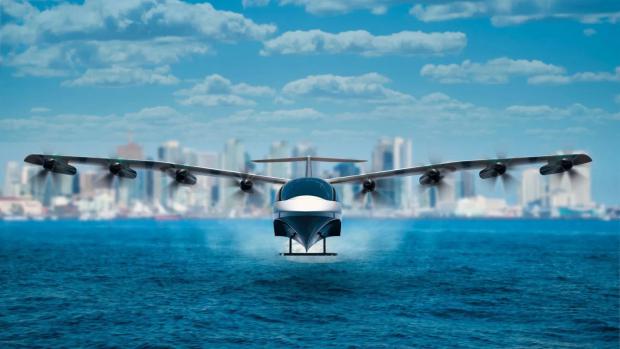
Breaking News
 BREAKING EXCLUSIVE: DOGE Investigation Discovers CIA/USAID & Soros Open Society...
BREAKING EXCLUSIVE: DOGE Investigation Discovers CIA/USAID & Soros Open Society...
 Former Capitol Police Chief publicly confirms Pelosi set the table for J6…
Former Capitol Police Chief publicly confirms Pelosi set the table for J6…
 Regent Craft Wing in Ground Effect Could Revive Giant Cargo Plane Dreams
Regent Craft Wing in Ground Effect Could Revive Giant Cargo Plane Dreams
 FBI Ignored Dem Whistleblower On Schiff's Alleged Criminal Leaks To Smear Trump
FBI Ignored Dem Whistleblower On Schiff's Alleged Criminal Leaks To Smear Trump
Top Tech News
 3D printing set to slash nuclear plant build times & costs
3D printing set to slash nuclear plant build times & costs
 You can design the wheels for NASA's next moon vehicle with the 'Rock and Roll Challenge
You can design the wheels for NASA's next moon vehicle with the 'Rock and Roll Challenge
 'Robot skin' beats human reflexes, transforms grip with fabric-powered touch
'Robot skin' beats human reflexes, transforms grip with fabric-powered touch
 World's first nuclear fusion plant being built in US to power Microsoft data centers
World's first nuclear fusion plant being built in US to power Microsoft data centers
 The mitochondria are more than just the "powerhouse of the cell" – they initiate immune...
The mitochondria are more than just the "powerhouse of the cell" – they initiate immune...
 Historic Aviation Engine Advance to Unlock Hypersonic Mach 10 Planes
Historic Aviation Engine Advance to Unlock Hypersonic Mach 10 Planes
 OpenAI CEO Sam Altman Pitches Eyeball-Scanning World ID to Bankers
OpenAI CEO Sam Altman Pitches Eyeball-Scanning World ID to Bankers
 New 3D-printed titanium alloy is stronger and cheaper than ever before
New 3D-printed titanium alloy is stronger and cheaper than ever before
 What is Unitree's new $6,000 humanoid robot good for?
What is Unitree's new $6,000 humanoid robot good for?
 "No CGI, No AI, Pure Engineering": Watch Raw Footage Of 'Star Wars'-Style Speeder
"No CGI, No AI, Pure Engineering": Watch Raw Footage Of 'Star Wars'-Style Speeder
Regent Craft Wing in Ground Effect Could Revive Giant Cargo Plane Dreams

Regent craft has a working 12 passenger version and has sales for a 100 passenger seaplane that would be about three times more fuel efficient than other planes. They do not need as much weight as prior wing in ground effect designs by using computers for stabilization.
Larger Regent WIG versions are hypothetical, as current Regent models top out at ~12.5 tons (Monarch passenger equivalent), with no announced plans for 200+ ton cargo variants. However, based on historical Ekranoplans (e.g., Lun-class at ~150 tons payload potential), modern concepts like DARPA's Liberty Lifter (aiming for 100+ ton heavy-lift at sea-skimming heights) and the Boeing Pelican (8000 tons), such scaling is technically feasible for hybrid/electric WIG vehicles. They could be optimized for coastal cargo (100-2,000 mile routes) by leveraging ground effect for 30-50% better efficiency than aircraft, achieving 2-3x the carrying capacity of comparable seaplanes while traveling at 180-300 mph—far faster than ships (20-30 knots) but with costs and efficiencies bridging the two.



